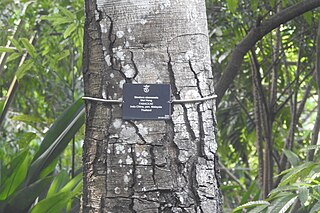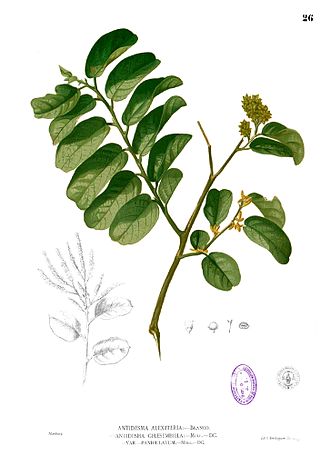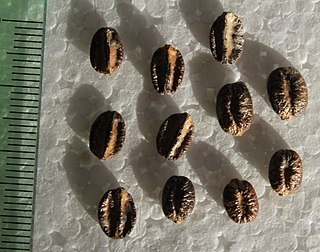
Stung Treng is a province of Cambodia in the northeast. It borders the provinces of Ratanakiri to the east, Mondulkiri and Kratié to the south and Kampong Thom and Preah Vihear to the west. Its northern boundary is Cambodia's international border with Laos. The Mekong River bisects the province. The province is mostly covered by forest, but logging and fishing put high pressure on the forest and fishery reserves.

Kratié, alternatively spelled Kracheh or Kraches, is a province of Cambodia located in the northeast. It borders Stung Treng to the north, Mondulkiri to the east, Kampong Thom and Kampong Cham to the west, and Tboung Khmum, and the country of Vietnam to the south.

Mondulkiri is a province (khaet) of Cambodia. Bordering the provinces of Kratié to the west, Stung Treng to the northwest, Ratanakiri to the north, and the country of Vietnam to the east and south. It is the most sparsely populated province in the country despite being the largest in land area. The province was established in 1961 from the eastern part of Kratié province. The capital is the town of Senmonorom.

The Bunong is an indigenous ethnic group in Cambodia. They are found primarily in Mondulkiri province in Cambodia. The Bunong is the largest indigenous highland ethnic group in Cambodia. They have their language called Bunong, which belongs to Bahnaric branch of Austroasiatic languages. The majority of Bunong people are animists, but a minority of them follows Christianity and Theravada Buddhism. After Cambodia's independence in 1953, Prince Sihanouk created a novel terminology, referring to the country's highland inhabitants, including the Bunong, as Khmer Loeu. Under the People's Republic of Kampuchea (1979-89), the generic term ជនជាតិភាគតិច "ethnic minorities" came to be in use and the Bunong became referred to as ជនជាតិព្នង meaning "ethnic Pnong". Today, the generic term that many Bunong use to refer to themselves is ជនជាតិដើមភាគតិច, which can be translated as "indigenous minority" and involves special rights, notably to collective land titles as an "indigenous community". In Vietnam, Bunong-speaking peoples are recurrently referred to as Mnong.

Sindora siamensis is a species of tree in the subfamily Detarioideae of the family Fabaceae. It has an accepted infraspecific, the variety S. siamensis var. maritima (Pierre) K.Larsen & S.S.Larsen. See taxon box to the right below, and below for details on the variety maritima. The nominate species is found in many countries in tropical Asia. Like several other species in the genus Sindora, its wood is considered valuable; the least concern conservation status may reflect efforts to replant this species, but mortality rates are high. As well as the wood, the plant provides raw material for chemical products, food and drink, and domestic utensils.

The Khmer Loeu is the collective name given to the various indigenous ethnic groups residing in the highlands of Cambodia. The Khmer Loeu are found mainly in the northeastern provinces of Ratanakiri, Stung Treng, and Mondulkiri. Most of the highland groups are Mon-Khmer peoples and are distantly related, to one degree or another, to the Khmer. Two of the Khmer Loeu groups are Chamic peoples, a branch of the Austronesian peoples, and have a very different linguistic and cultural background. The Mon–Khmer-speaking tribes are the aboriginal inhabitants of mainland Southeast Asia, their ancestors having trickled into the area from the northwest during the prehistoric metal ages. The Austronesian-speaking groups, Rade and Jarai, are descendants of the Malayo-Polynesian peoples who came to what is now coastal Vietnam; they established the Champa kingdoms, and after their decline migrated west over the Annamite Range, dispersing between the Mon–Khmer groups.

Antidesma ghaesembilla is a species of plant in the Phyllanthaceae family. It is native to an area from northern Australia to the Philippines, Zhōngguó/China, and west to India. The shrub or tree usually grows in moist soils in plant communities ranging from savannah to gallery forest to closed forest. It is associated with a number of species of fungus, insects and animals, including emus. Amongst the Mangarrayi and Yangman people of north Australia, the sweet ripe fruit of the tree are much appreciated and linked to the build-up season and to the koel. As well as food, the plant is used as a calendar-plant, for dyeing, in traditional medicine, in religious/magical practices, as fuel, and as an insecticide.
Ziziphus cambodiana is a deciduous thorny shrub, or vine, some 2–6 m tall, found growing in secondary undergrowth in Cambodia, Laos and Vietnam, and northern Thailand.
Homalium brevidens is a shrub or tree species in the family Salicaceae, found in Laos and Cambodia.
Dendrolobium baccatum is a species of flowering plants in the Fabaceae family. A shrub, it occurs in Mainland Southeast Asia. People use it for food and fuel.
Erythroxylum cambodianum is a shrub in the family Erythroxylaceae. It grows in Vietnam, Laos, Cambodia and Thailand. The wood is used for pickets and as firewood.
Memecylon caeruleum is a shrub or tree species in the Melastomataceae family. It is found from New Guinea, west through Southeast Asia to Tibet, Zhōngguó/China. It has become an invasive weed in the Seychelles. It has some local use for wood and food.
Pantadenia adenanthera is a shrub in the Euphorbiaceae family. It is found in parts of Southeast Asia. The species is used for its wood and edible fruit.
Samadera harmandiana is a freshwater mangrove shrub or small tree in the Simaroubaceae family. It is found in Cambodia, Laos and Vietnam. The wood provides firewood. Certain fish eat the poisonous fruit
Stixis obtusifolia is a shrub or liana in the Resedaceae family. It is found in parts of Southeast Asia. The wood is used as fuel, the leaves as a tea.
Strychnos nux-blanda is a shrub or small tree in the Loganiaceae family. It is native to Southeast Asia and Assam. The wood is used as fuel; seeds are toxic, but used in folk-medicine. It is one of the plants featured in the garden of King Narai (1633–88) at Lopburi, Thailand.

Xanthophyllum lanceatum is a tree in the Polygalaceae family. It grows across Southeast Asia from Sumatera to Bangladesh. The leaves are used as a hops-substitute in beer making and the wood as fuel. Fish in the Mekong regularly eat the fruit, flowers and leaves.

Aporosa octandra is a species of plant in the family Phyllanthaceae found from Queensland and New Guinea to Indonesia, Zhōngguó/China and India. It is a highly variable plant with 4 named varieties. Its wood is used in construction and to make implements, its fruit is edible. The Karbi people of Assam use the plant for dyeing, textile colours have quite some significance in their culture.
Aporosa villosa is a species of shrub or small tree in the family Phyllanthaceae. It is found in Southeast Asia, including the Nicobar, Andaman and Paracel Islands. There are some traditional medicinal uses for plant, particularly around care after childbirth. The shrub is often a pioneer species, tolerant of full sun, but intolerant of frequent fires.

Ampelocissus martini is a species of climber or shrub in the Vitaceae family. Some sources use the spelling Ampelocissus martinii. It is native to an area of Mainland Southeast Asia. The fruit are eaten by people and by several species of Pangasiidae shark catfish of the Mekong river.










